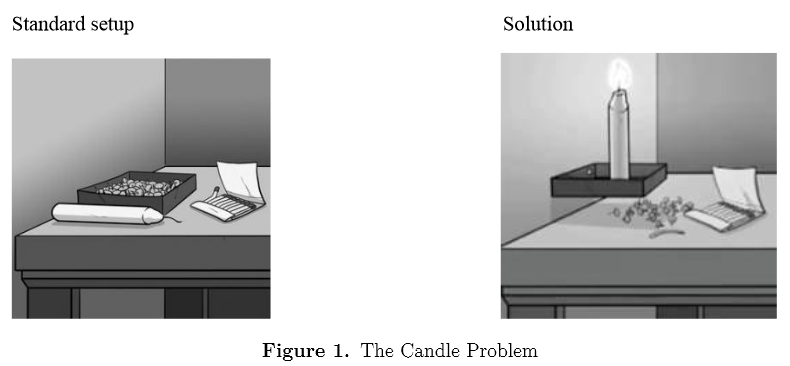
“How do I motivate my team in a positive way?”
I’ve received this question from a number of our team leads and, although I did reply from a lot of my own experience, this most recent time the question really made me wonder what motivates our people, and workers in general.
I am sure some you have heard about ‘The Candle Problem” created by psychologist Karl Duncker (Psst… I hadn’t heard about it).

blueEHR; motivating people; candle problem
The Problem
Study participants have to affix a lit candle to a cork wall in a way that the wax won’t drip onto the table below.[1] They are given the following along with the candle:
- a book of matches
- a box of thumbtacks
The Right Solution
Not to spoil the story so soon, but the solution is to empty the box of thumbtacks, put the candle into the box, use the thumbtacks to nail the box (with the candle in it) to the wall, and light the candle with the match. A lot of the participants came up with other creative, but less efficient solutions – some tried to tack the candle directly to the wall, while others attempted to melt some of the candle’s wax and use it as an adhesive to stick the candle to the wall.
Here’s the interesting thing – when the same problem was presented with the tacks piled next to the box (rather than inside it), virtually all of the participants realized how to achieve the optimal solution. When the tacks are outside the box, the brain looked at it as a tool but when the tacks are in the box, participants had to reinvent the box as a platform.
(As an aside, this concept is known as functional fixedness – the cognitive bias that limits a person to using an object only in the way it is traditionally used. When the tacks were inside the box, the problem required participants to provide a more creative solution.)
Scientist Sam Glucksberg later used ‘The Candle Problem’ to study the effect of economic incentives on performance.
Glucksberg used the same problem but offered some participants cash prizes for completing the task within a certain time limit (high-drive) while others completed the test without any financial reward (low-drive).
The high-drive participants were told they could earn between $5 and $20 depending on how quickly they solved the problem. Surprisingly, in this case, high-drive subjects performed worse than low-drive subjects.
Glucksberg interpreted this as “neobehaviorism drive theory”. Put simply, the reason high drive subjects performed worse was due to fact that competition and higher stakes added pressure and stress which reduced creativity and didn’t allow them to think out of the box (I guess that phrase is linked to this somehow).
This stress triggered participants’ fight-or-flight response, effectively shutting down the creative thinking and problem solving areas of the brain in the prefrontal cortex.
Now I have always heard, read and believed that when you pay people more money, they will work better.
This dictum was imbibed in my business mind and is reinforced by most of business processes around the world. And here these studies prove the opposite. People don’t necessarily need financial incentive to perform.
So, after reading these two studies and indulging my personal penchant for psychology, what motivates people to perform optimally? And to return to the original question, how do we motivate teams in a positive way?
To me, it is about meaningfulness and freedom. If we pay people fairly, give them a cohesive team environment to innovate and magnify the meaning of their responsibilities – they will be motivated and will deliver innovative, groundbreaking results.
The rest will fall in place.
(Note: I found Drive to be a fascinating read that really elaborates on this concept.)